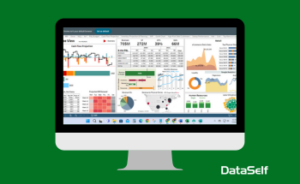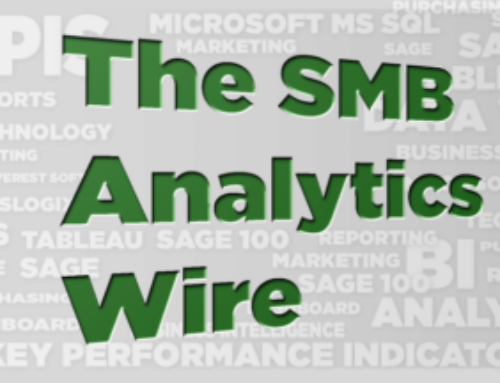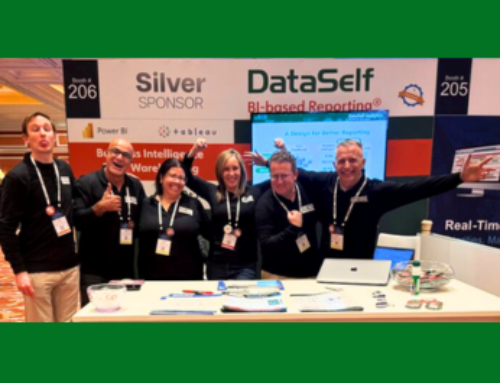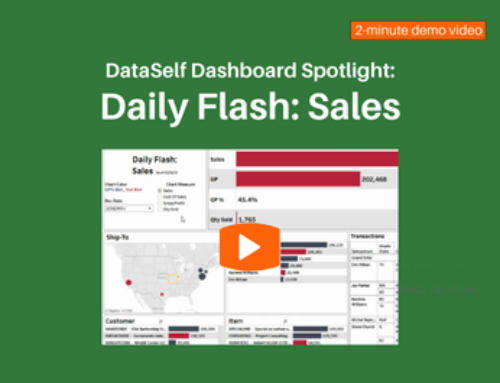Reporting for Management: BI-based Analytics
 It’s a typical complaint voiced by managers:
It’s a typical complaint voiced by managers:
“Why can’t I get the insight I need from my ERP reports?”
To answer this question, you need to understand how standard ERP reporting works, and how the manner in which ERP apps store their data affects the analytical insight you can get out of that data.
How Standard ERP Reporting Works
ERP applications are ‘transactional’; they are designed to expedite the entry and processing of items such as invoices, payments, and projects. And the reports designed for ERP tend to focus on three aspects of transactional processing:
- What has happened (audit trails). E.g., what orders were placed, what payments were received, what projects were started.
- What needs to happen. E.g., what invoices need to be delivered, what purchases need to be initiated, what projects need to be approved.
- What’s the current status. E.g., what clients are past due, what items are below their safety stock level, what projects are on hold.
The above insight is undeniably important. However, the microscope-like focus of ERP reporting results in a lack of big-picture KPIs. ERP reporting focuses on what’s happening in a business, but doesn’t tell why it’s happening. And the ‘why’ is exactly what managers, executives, and C-level staff need to know.
Why ERP Reporting Doesn’t Work for Management
ERP reports lack usability by management for six reasons:
- Excessive runtime. Effective decision-making cannot wait hours or days. With the huge amount of data stored in an ERP app, analytical reporting is slowed to a snail’s pace. Traditional ERP reports take hours to execute; sophisticated ones (such as trend analyses) take days.
- ‘Bad’ Data. Bad data results in bad decisions. ERP databases contain errors, omissions, and inconsistencies – problems that are slow to detect and even slower to fix. Errors in individual records are magnified as they get extrapolated and skew the results of trend-based analytics.
- Decentralized metrics. Inconsistent reporting metrics yield conflicting results. In ERP reports, KPIs are defined within each report, giving rise to differing results. A “single version of the truth” becomes impossible, and businesses can adopt strategies that harm rather than help.
- ‘What’ versus ‘why’. ERP’s excessive details obscure overriding causes. Because ERPs focus on audit-like details, they lack aggregates and other trend and performance-based totals. As such, ERP reports lack the in-depth ‘macro’ statistics that are used to determine corporate strategies.
- Difficult Customization. Managers can’t get what they need, when they need it. ERP reports aren’t meant to be designed by non-technical users. Analyst and database administrator expertise is usually required, resulting in in a delay of weeks or months in report delivery.
- Limited Drill-down & Roll-up. Trends aren’t always obvious. Since ERP reports focus on details, record drill-down (and roll-up) are limited to one level and selection of ‘analytical measures’ (e.g., measuring sales by revenue, gross profit, or COGS) is typically hard-coded.
The Answer: DataSelf Analytics BI-based Analytics
DataSelf Analytics combines two technologies — data optimization & BI-based analytics – to alleviate the limitations of standard ERP reporting. BI-based Reporting supports the analytical needs of managers and C-level staff in the following ways:
- Sub-ten Second Execution. DataSelf’s ETL+ technology extracts ERP source data, removes extraneous information, and loads the results into an optimized SQL Server data warehouse.
- Data Cleansing. After extracting your source data, ETL+ cleanses it – by removing bad data, correcting inconsistencies, and (optionally) integrating data with other (e.g., legacy) datasets.
- Centralized metrics. Report calculations and formulas are defined on a centralized server, ensuring that all reports that use a specified metric use the same calculation for that metric. This ensures ‘a single version of the truth’ and an unambiguous picture of a company’s performance.
- ‘What’ plus ‘why’. The DataSelf solution executes thousands of calculations to create 8,000+ aggregates, KPIs, and other metrics that are critical to managers and executives. These provide the ‘macro’-level insight (and predictive forecasting) that every business needs.
- Streamlined Report Design. Using simplified data models, non-technical staff can create & customize their own reports via a user-friendly drag-and-drop method. Additionally, a natural-language query engine allows report creation via a Google Search-like interface.
- Superior Analytics. Leveraging the industry’s top business intelligence engines (Tableau and Power BI), users employ tools like infinite drill-down and dynamic slice-and-dice to go beyond the details of what a business is doing to how it is doing – and why.
Bottom-line: The reports that come with an ERP app were made for users like accounting clerks, salespeople, and warehouse staff. These folks require a microscopic view into ERP details for such things as payment processing, order fulfillment, and shipping.
Where standard ERP reports fail, however, is in providing a telescopic view of ERP business activities. These provide managers and executives with the insight to make the best and most timely business decisions. DataSelf’s BI-based Reporting solution supplies analytics for both groups; audit and task-level information for operational efficiency, and trend and performance-level information for strategic intelligence and decision making.




